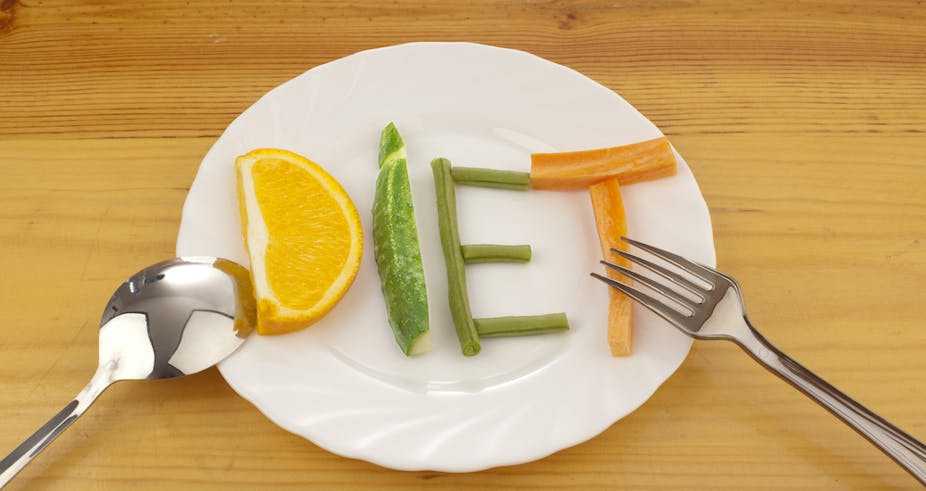If food is labelled low fat, it’s got to be better for weight loss, right? Wrong – it’s the total kilojoules that matter most for weight loss. Looking solely at fat content only gives you part of the picture.
Back in the 1970s, few foods were specifically manufactured to be low in fat. If, on doctor’s orders, you had to follow a low-fat diet, a trip around the supermarket was fast – skim milk, lots of vegetables and fruit, cottage cheese, fresh fish, and that was about it. Needless, to say you lost weight and got bored very quickly.
In 1982, we got our first set of Australian Dietary Guidelines, recommending we “avoid eating too much fat”. After that, a few more low-fat products appeared on the supermarket shelves.
The second edition of the guidelines in 1992 called for us to “eat a diet low in fat, and in particular, low in saturated fat”. This was attributed to recognition that obesity had now become a problem in Australia.
Then, in the mid-1990s, guidelines for foods with low-fat and reduced-fat content claims on their labels appeared in the Code of Practice on Nutrient Claims. From this time we really started to see an increase in products making these claims.
If a food label claims a product is low in fat, it must contain only three grams of fat or less per 100 grams of product. If it says reduced fat, it must contain at least 25% less fat than the usual version of this food.
The dietary guidelines were revised again in 2003 and the recommendations for lower total fat and saturated fat choices were embedded across a number of the guidelines, with a specific statement to “take care to limit saturated fat and moderate total fat intake”.

We have now been advised to reduce our fat intakes for over 30 years, and low-fat products flood our supermarkets and food courts. Sadly, however, our waistlines have continued to expand and our fat intakes have not reduced.
Something is clearly awry. Somewhere along the way, low fat has been misinterpreted to mean “eat more” because it is low in fat. So rather than linger over a sliver of sponge cake that would contain about 600 kilojoules (150 Calories), I can scoff a muffin the size of a small plate with as many as 2,000 kilojoules (500 Calories), because the sign said low fat.
Just because a food is low in fat doesn’t mean it’s low in total kilojoules.
What does the evidence say?
Food is made from macro-nutrients: protein, fats and carbohydrates. These each provide energy in the form of kilojoules. One gram of protein provides 17KJ, one gram of carbohydrate provides 16kJ and one gram of fat provides 37kJ. Fat has the highest kilojoules so you would think that following a diet low in fat should automatically mean you eat fewer kilojoules and lose weight. Not so.
My colleagues and I recently updated the adult weight-management guidelines for the Dietitians Association of Australia and reviewed the recent evidence comparing higher carbohydrate/lower fat diets for weight loss to higher fat/lower carbohydrate diets.

The good news was we found there were lots of studies, with a systematic review and seven recent randomised-controlled trials. Overall, when protein and energy intake were held constant across the two diets, both approaches were equally effective in achieving weight loss.
Back onto the Australian Dietary Guidlines, the latest draft says to “limit intake of foods and drinks containing saturated and trans fats and to include small amounts of foods that contain unsaturated fats.”
If you’re putting low-fat foods into your shopping trolley, it’s wise to stick to the ones that would have been around in your grandparent’s day. This means eating more vegetables, fruits and low-fat dairy products, plus whole grains, fish, or vegetarian sources of protein such as baked beans. It also means avoiding packaged and highly-processed low-fat foods.
If a low-fat diet is not palatable to you, you can still lose weight eating more fat, but you will need to be more aware of the kilojoule value of the foods you choose to eat.
The bottom line is that when it comes to weight loss, watch the total kilojoules, because it’s excess kilojoules rather than dietary fat that leads to weight gain.

